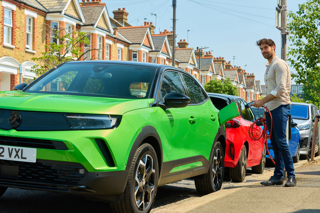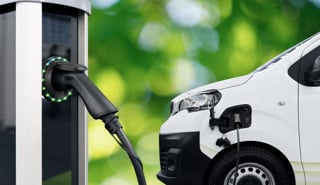
Fleet FAQ
Q:
What causes electric vehicle (EV) battery degradation?
A:
Anyone who has used the same smartphone for a long period has experienced the issue of battery degradation.
When new, the lithium-ion battery seems to last forever, but, over time and use, they need to be charged more often as their capacity reduces.
This is also true of electric vehicle (EV) batteries, which share a similar chemistry.
That means the vehicle will suffer a decrease in its range over time, while there are also concerns that the battery health will affect an EV’s residual value (RV) when it is sold.
It may also affect a battery’s potential to be used in ‘second-life’ applications such as battery storage after it is no longer used to power a vehicle.
However, there should be no reason for a fleet decision-maker or driver of a new battery electric vehicle (BEV) to panic over this.
All OEMs offer lengthy warranties on their BEV batteries – typically eight years/100,000 miles – with most manufacturers guaranteeing batteries will retain at least 70% of their original capacity after this time.
In 2020, telematics supplier Geotab analysed data from 6,300 fleet and consumer EVs in America, representing 1.8 million days of data and 21 vehicle models.
It found batteries were exhibiting high levels of sustained health and, if the observed degradation rates were maintained, the vast majority of batteries would outlast the usable life of the vehicles.
One of the causes of accelerated battery degradation is frequent rapid charging.
“There haven’t been that many EVs around for long enough to be collecting huge amounts of data,” said a spokeswoman at the Faraday Institution.
“What I would say is that the more rapidly a battery is charged, the more stress you’re putting on the complex electrochemical system that lies at the heart of the power generation.
“It’s always going to be the case that as we move to more and more rapid charging, it will be of real significance to how the battery degrades and how long a lifetime it has.”
Geotab’s analysis found that after 48 months, EVs operating in a hot climate which had been rapid charged more than three times a month would have an average battery state-of-heath (SOH) of around 80%.
When new, a battery has a 100% state-of-health (SOH). After the same period, an EV which had never been fast charged had an SOH of around 90%, while one which was fast charged up to three times a month was at 85%.
A spokesman at EY, says there is anecdotal evidence that vehicle makers are looking back at slightly older technologies to address degradation.
“The industry has been largely focused on things like power density and the speed of charging, so we’ve transitioned towards high nickel battery materials,” he says.
“They’re great for certain attributes, but you do suffer from the length of lifetime and the number of cycles these batteries can be recharged.
“We’ve seen over the past few months that OEMs are picking up interest in an older technology called lithium iron phosphate (LFP), which has a lower energy density and potentially lower range, but actually has a better lifetime.
“This may be suited to something like a fleet of delivery vans, which is probably more concerned with total cost of ownership over the lifetime of that fleet.”
> Interested in comparing electric vehicle data? Check out our EV tool.
> Interested in ensuring the efficient use of EVs. Check out our dedicated editorial sections: Insight & policy | EV news | Charging & infrastructure | Costs & incentives | Benefit-in-kind | EV case studies | EV road tests
> EVs by price: lowest to highest

















